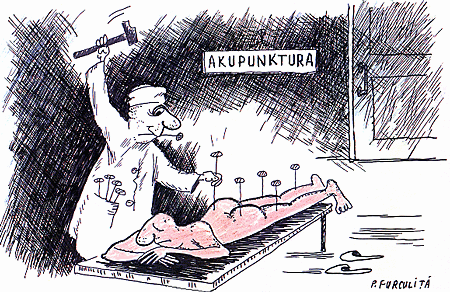acuto-, acut-, acuti-, acu-, -cusis; also, agu-
(Latin: sharp, to sharpen; point; needle, pin)
2. In medicine, the compression of a bleeding vessel by inserting needles into adjacent tissue: Dr. Schneider was a specialist in using very thin pins in acupressure to stop the bleeding in Susan's wound directly after her accident.
Dr. Schneider also found the points on Mary's body for treating the areas with acupressure using his fingers and hand massage.

2. As adapted in Western medicine, the needles may be twirled or be applied as a weak electrical current; Acupuncture is also called "stylostixis".
The quickest way to experience acupuncture is to try on a new shirt.
Acupuncture has its points.
Blunt words often have the sharpest edges.
Acupuncture is said to be a medical treatment that starts with being stuck with a needle and ends with being stuck with a medical bill.
Historical background of acupuncture
Acupuncture, the insertion of thin needles into specific points on the body in order to relieve pain or to treat illness, was developed in China more than four thousand years ago.
It is based on the idea that the body contains an essential life energy known as qi (CHEE), which flows in channels or meridians. It was believed that qi was made up of two varieties of energy, yin and yang.
In the human body, the male or yang elements indicate the capacity for "activity and transformation", while the female or yin characteristics are associated with "circulation, nourishment, and growth"; and the balance between them needs to be maintained.
The purpose of the acupuncturist is to remove barriers to the flow of qi and to restore the balance of yin and yang and such objectives are thought to be achieved by the placement of needles at certain positions on the surface of the patient's body.


